Ever since I learned how to dive, it has been my dream to go scuba diving in Tubbataha Reefs. This has always been on the top of my dive bucket list but I stalled going here due to accessibility and budget concerns.
Tubbataha Reef Natural Park is considered to be one of the best dive destinations in the Philippines and only a few divers have visited this UNESCO Heritage site. Tubbataha is open to divers from mid-March to mid-June and can only be accessed by going on a liveaboard.
I wasn’t planning on doing it this year but the opportunity presented itself 2 years ago when I saw a post that there were discounted prices on MV Resolute Tubbataha liveaboard for 2020.
And of course, we all know what happened that year. With borders closed and trips canceled because of the pandemic, it wasn’t until this year that I was able to dive in Tubbataha Reefs.
In this post, I will share with you my experience going on a liveaboard with MV Resolute.
If it’s your first time to go on a liveaboard, this will give you an idea as to what you can expect if you go on one!
MV Resolute Tubbataha Experience
On April 2022, I made my way to Puerto Princesa to go on a Tubbataha liveaboard trip with MV Resolute. I arrived the day before our scheduled departure date because I didn’t want to feel rushed.
Since traveling within the Philippines hasn’t completely gone back to normal, I felt that arriving a day early was a good call in case flights get canceled or delayed.
Embarkation
MV Resolute offers free pick-up at the airport. If you are staying within 10km from the liveaboard vessel, you can arrange for pick up too. Since I was already in Puerto Princesa, I requested to be picked up at my hotel. I was told to be at the lobby at 2 PM.
I had to wait a bit, and for a moment I thought they had forgotten about me. I didn’t consider that there would be other passengers and that they only had 1 van to pick up everyone. I was the last to be picked up at around 3 PM.
It took 15 minutes to get to the pier where MV Resolute was docked. Upon arrival, the Resolute staff took my bag to the dive deck where I unpacked my dive gear.
I was given a crate where I transferred all my scuba diving equipment. After sorting that out, I headed to my assigned cabin with the rest of my things.

By 4 PM all the divers had arrived on board.
Ernie, the owner of MV Resolute, called us into the lounge area for our briefing. He doesn’t always join the expeditions but since this was the first cruise of the season he wanted to make sure that everything was running smoothly. He also served as our cruise director at the time.
He went through our schedule, some safety procedures, and some rules and reminders while we were on board.
| Day 1 | Embarkation and depart Puerto Princesa |
| Day 2 | Arrive at Tubbataha; Diving day (4 dives) |
| Day 3 | Diving day (4 dives) |
| Day 4 | Diving day (4 dives) |
| Day 5 | Diving day (4 dives) |
| Day 6 | Half-day diving (2 dives); Depart Tubbataha |
| Day 7 | Arrive at Puerto Princesa and disembarkation |
| 6 AM | Wake up / Light breakfast |
| 7 AM | 1st Dive |
| 8 AM | Heavy breakfast |
| 10 AM | 2nd Dive |
| 12 NN | Lunch |
| 2 PM | 3rd Dive |
| 3 PM | Snack |
| 4 PM | 4th Dive |
| 7 PM | Dinner |
| | |
After our boat briefing, we watched a Tubbataha video. This was to inform us about the UNESCO heritage park and to remind us of the rules and regulations of the park. Previously, someone from the Tubbataha Management Office (TMO) would come on board to give a briefing but since the pandemic, they changed this practice.
By 6 PM, the anchor was raised and we sailed towards Tubbataha Reefs Natural Park and Heritage Site. Dinner was served at around 7 PM, and I was in bed by 9 PM! I decided to sleep early in preparation for the multiple dive days ahead.
The journey was a bit rough and I was thankful I had stocked up on some Bonamine to fight the motion sickness.
Halfway through the night, we lost our mobile signal and were cut off from the rest of the world.
Day 1 at Tubbataha Reefs
The following day I woke up in Tubbataha and it was not how I expected it.
The sky was gloomy and huge waves made it difficult to move around. Our first dive was supposed to be at 7 AM but the conditions were so bad that we only got in the water at 9 AM.
Since there were 15 scuba divers on board, we were split into 2 dive groups. I was assigned to group B with Kuya Abel as our dive guide.
After our briefing, Group A was asked to gear up and head out. Once they were done, our group headed to the dive deck to get ready.

Dive 1: Wall Street
Our first dive was a checkout dive at a site called Wall Street in the North Atoll.
As this was a checkout dive I decided to just bring my GoPro instead of my big camera setup. The heavy waves did worry me a bit and I wanted to focus on the diving. I also wanted to familiarize myself with the procedures and how everyone else dived.
To be honest, my first impression of Tubbataha wasn’t as great as I had anticipated. The weather still didn’t improve by the time we entered the water. It was gloomy which also made the reef look a bit sad.
However, I could tell that the reefs would have looked amazing with the right conditions. The gigantic barrel sponges and sea fans were very impressive. And the presence of schooling fish and sharks was enough to get me excited for the 17 other dives I would be doing that week.
After our first dive, a warm and much-needed breakfast was waiting for us.
Dive 2: Wall Street
Our second dive was in the afternoon after lunch and we returned to Wall Street. While I had dived this site earlier it felt like I was diving it for the first time. That’s one of the amazing thing about Tubbataha. The atolls are so wide and deep that you can dive at the same site over and over again and never tire of it.


Dive 3: Malayan Wreck
Our last dive for the first day was at Malayan wreck. Apparently, there was an explorable wreck at around 3 meters which our group didn’t see. I thought it was just a marker or reference point.
Our group ended up going straight out into the blue hoping to see some pelagics. We didn’t see anything exciting or worth highlighting which ironically makes this dive memorable.
It was sad to hear that the other dive group saw some beautiful schooling oriental sweetlips and a nurse shark hanging out around the wreck.
Day 2 at Tubbataha Reefs
The following day we moved to the South Atoll and did all our dives in Delsan Wreck. We pretty much followed the same schedule as the day before except this time the weather was better.
This turned out to be a really good dive day with lots of action like huge schools of jacks, barracuda, and of course sharks!
Dive 4-7 : Delsan



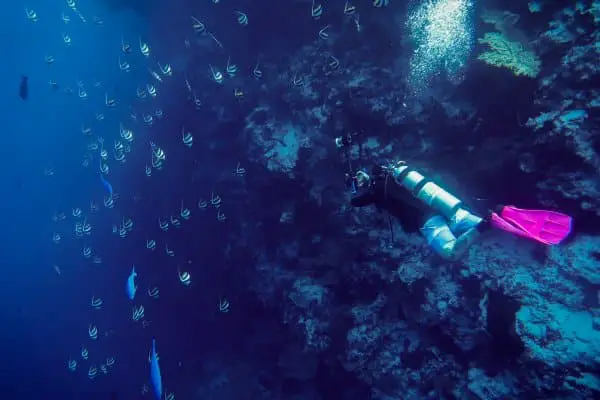
Day 3 at Tubbataha Reefs
On our 3rd day in Tubbataha Reefs, we continued diving around the South Atoll and went to Black Rock. This area was known for manta rays sightings because of the really strong currents in the area.
Much to my dismay, we did not see any mantas. I did still enjoy the dive site and saw a variety of corals and reef fish that I did not see in the previous dive sites.
Dive 8 and 9: Black Rock




Dive 10: Washing Machine / Shark Airport
In the afternoon MV Resolute took us back to the North Atoll to dive in Washing Machine and Shark Airport. We were expecting really heavy currents at the washing machine but it turned out to be a leisurely, current-free dive.
This turned out to be one of my most memorable dive, as this was the first time I encountered a whale shark! That’s another one ticked off my Philippine dive critter list!



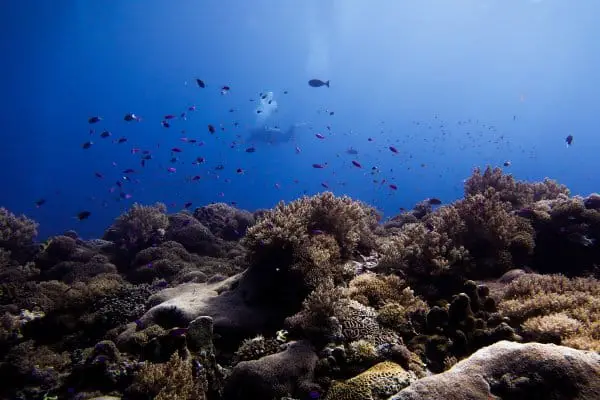
Dive 11: Ranger’s Station
In the afternoon, we made our way to the ranger station. We went diving in the area right in front of it and after our dive, we paid the ranger station a visit.
We didn’t bother changing after our dive and just hopped on our dive boat and set foot on land for the first time in Tubbataha.

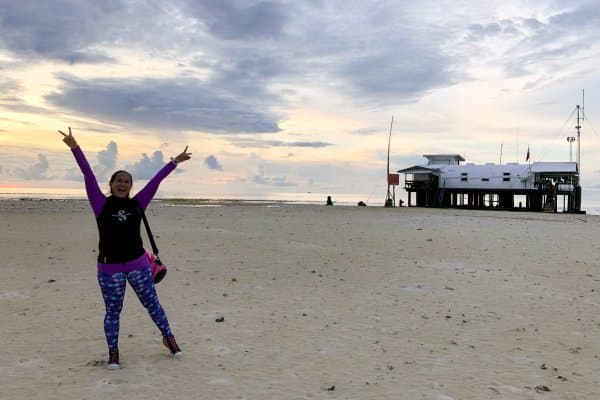
Day 4 at Tubbataha Reefs
Dive 12: Black Rock
The next day we returned to Black Rock to try our luck again for some mantas. I finally got to see my first marble ray that was about 18″ in diameter! They can grow up to 9 feet so I consider this tiny.
While there were still no manta ray sightings, we did encounter a huge shiver of gray reef sharks! There were about 30 of them. This was the most shark I’ve seen while diving in the Philippines.
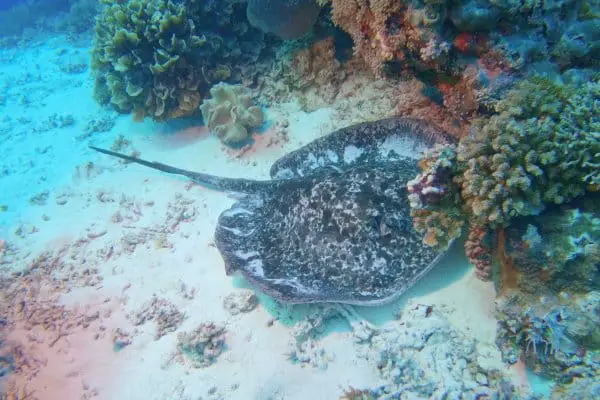


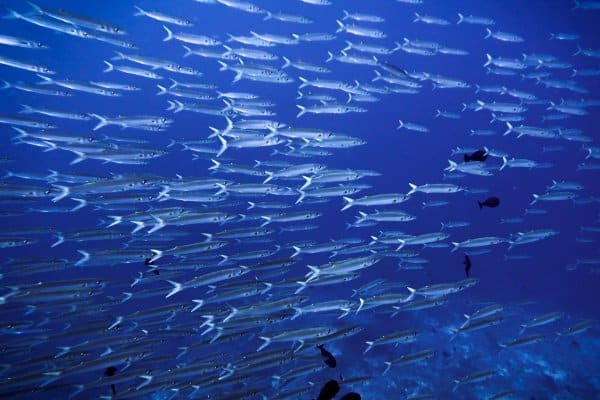
Dive 13 and 14: Delsan
We returned to Delsan for two last times hoping to see more pelagics. I finally got a close hammerhead shark encounter. It swam around us for a minute until it descended back to the blue.


Dive 15: Triggerfish City
In the afternoon, we visited triggerfish city. I am guessing it is named as such because of the dense population of triggerfish that can be found here.


Day 5 at Tubbataha Reefs
On our last day in Tubbataha Reefs Natural Park, we woke up at Jessie Beazley reef. Since our first scheduled dive on the first day was canceled we ended up doing three dives here to make up for it.
Dive 16-18: Jessie Beazley
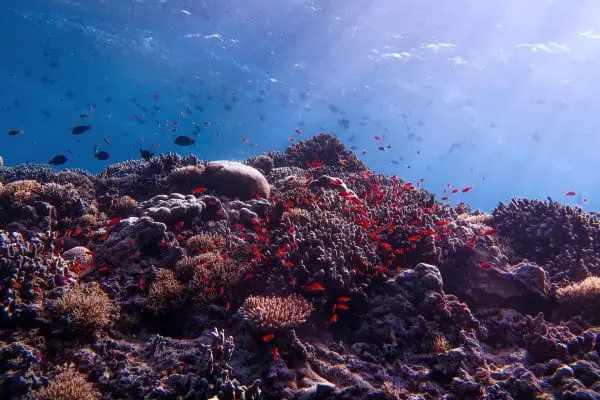
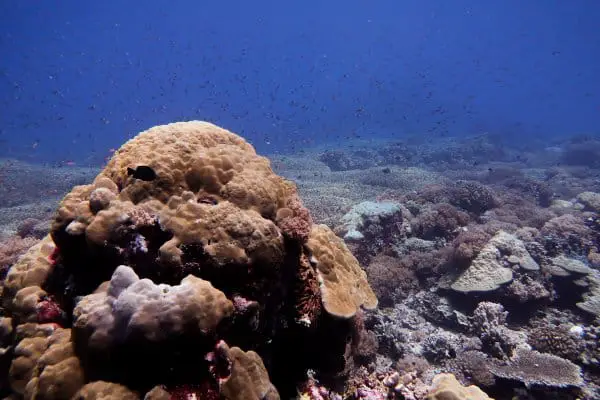

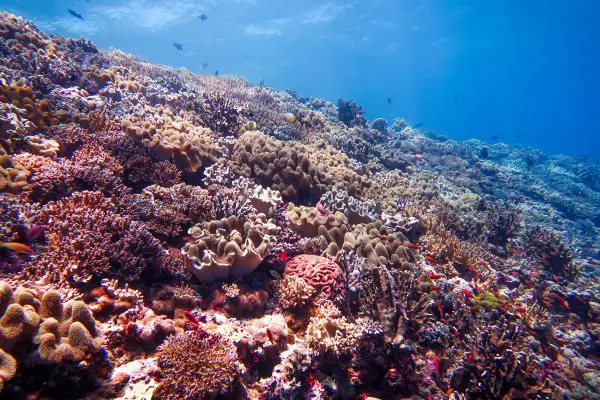
I thoroughly enjoyed diving at Jessie Beazley reef because of the corals and reef fish. After diving the North and South Atolls to look for big pelagic creatures, it was a good change of pace to just have more relaxing dives on the last day.
In the afternoon, after all our dives, we sailed back to Puerto Princesa.
Disembarkation
The next day, I woke up to a beautiful sunrise in Puerto Princesa. Breakfast was served at around 7 AM.
After breakfast, I packed my personal belonging and dive gear and waited for disembarkation.
While waiting, I filled up a feedback form. I did give them a good rating and told them I had a pleasant stay. I am sure I will be diving with them again!
I did express my disappointment that we were not able to see the other dive sites in Tubbataha. As a first-time visitor, I was hoping to dive in all the sites but we ended up diving Delsan so many times.
Ernie did get back to me about this and explained that they brought us to where they thought would give us the best experience at the time considering the conditions. I thought this was an acceptable and legitimate reason and I am glad that he took the time to explain this to me.
At around 9 am, we boarded one of our chaser boats. Then transferred to a van that would take us to our hotel in Puerto Princesa or the airport.
Dive Services on Resolute

The dive deck on resolute is spacious and can fit the 16 divers at the same time. But to make it more comfortable for everyone, they implemented a system to let us gear up in teams.
We all have our own crates and there are benches all around the deck.
There are three showers at the back of the deck were we can cool off before a dive or rinse the salty water after the dive. They have two dunk tanks but they’re only meant for cameras and dive computers.
After the dive, they have an area where you can hang your wetsuit, swimwear, dive protection suits and towel. It’s pretty much first come first serve so if you have lots of things to dry, you might want to bring your own clothes pin and hangers.
Dive Gear Rental
Included in the MV Resolute liveaboard package are free air refills and the use of their 12 liter tanks with DIN or yolk valves, a reel and dSMB, weights, and weight belts.
Scuba diving gear (BCD, regulator, dive computer, wetsuit, mask, fins, booties, and 15-liter tanks) can be rented for additional fees. Prior to the trip, they will send you a dive gear rental form so you can let them know if you need to rent or not.
If you prefer to dive on Nitrox, they also offer this for additional fees.
I didn’t rent gear but I did pay extra for Nitrox refill for all my dives. I highly recommend this especially with the multiple deep dives we were doing in Tubbataha.
Dive Briefings
Before every dive, we gather in the dining area to do our dive briefings. Either Kuya Abel or Kuya Edwin, the two Dive Masters on board would do the dive briefings.
They use illustration boards or draw on a white board to explain the sites to us. And remind us not to go into deco- something that is not allowed in Tubbataha.
Even if we’ve been to the dive site before and it feels redundant, we still do the dive briefings.
Dive Boat

One of the things I liked about diving with Resolute is that they have 2 dive boats / chaser boats that would take us to the dive sites. It was solid, spacious, and could accommodate 8-12 diver at a time.
The staff of Resolute took care of loading our dive gear unto the dive boat. Our only responsibility was to check that our gear was complete and working before heading out to the site. The liveaboard has an “open your own tank” rule to avoid confusion if your tank is open or not.
We only get kitted up once we arrive at the sites which are usually 5-10 minutes away from where Resolute is moored. Once everyone was ready, we enter the water together by doing a backroll entry.
When the dive is done, our boat will be waiting for us and we take turns getting back on. There are ropes you can hang on to in case it gets rough. The is also a ladder to help you get onto the boat with ease.
Kuya Jason was our assigned skipper that week. He brought us to the dive sites, assisted us as we geared up, and waited for us until the end of the dive.
MV Resolute Cabins

Each cabin in MV Resolute can fit two divers. They have 8 fully air-conditioned rooms with their own bathrooms.
Since I was traveling solo, I had to room with a stranger. My roommate was a male diver from Australia. They did ask for my permission if I was okay with this. Growing up with brothers I didn’t mind. I did request to get the bottom bunk bed, which they happily obliged.
While the rooms were tight, the beddings were thick and comfy. My roommate though wasn’t so happy with how close the ceiling was to his face and the air conditioning blasting beside him.
Each bed had its own reading light and a 220v outlet. I liked that it also had a built-in USB port.
The room had shelves and lots of space under the bed. If you have a lot of things, there are spaces to store them.
MV Resolute has 2 smaller rooms towards the bow of the boat. These are usually priced lower but if you are claustrophobic, you might not feel comfortable staying there.

The bathroom is spacious as well. It has a hot and cold shower and environmentally-safe shampoo and liquid soap are available.
My only issue with the bathroom is it just stays wet all the time. I think because of the shape of the floor and the boat moving constantly, water doesn’t drain too easily.
Towels are provided so that’s one less thing to pack.
The rooms are also made up every day. While we are on our dives, Joan who is the Resolute’s stewardess/ housekeeper/ and all-around awesome woman, tidies up our cabins so we get back to a cozy room. I really appreciated this as it felt more inviting to just jump into bed after a full day of diving.
Check MV Resolute cabin amenities and availability at Liveaboard.com
Food on MV Resolute
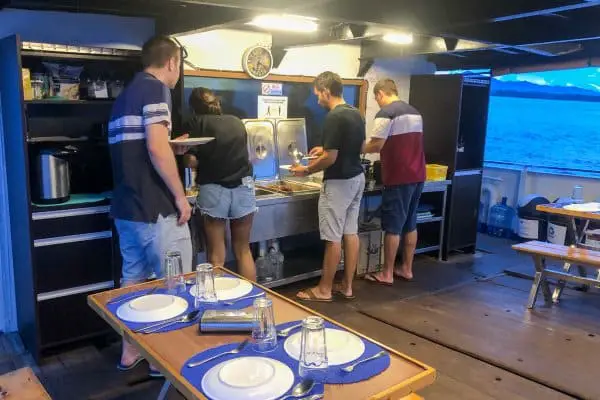
Since we were diving 4 times a day, we were burning a lot of calories. You would think that we’ll lose some weight by the end of the trip, but they fed us so much that we just gained it all back.
We ate five times a day, starting with a light breakfast before our first dive. This was followed by a heavy breakfast. After our second dive, we are served lunch. In the afternoon, snacks are served after the third dive. Then dinner is served at 7 PM.
The MV Resolute had 2 well-experienced chefs on board that prepared 5-6 dishes every meal. They like to cook Filipino cuisine but they also served international dishes.
Meals usually included 2 meat dishes, 1 seafood dish, rice or noodles, soup, and vegetables. Breakfast and lunch were usually served with fruits. At dinner time we got cake and ice cream for dessert.



Light breakfasts were ready-to-eat food like cereal, oats, bread, and jams. In the afternoon they served us Filipino-inspired snacks like turon or banana fritters.
Food is served buffet style so you can get as much as you want. The dishes were delicious and I found myself going back for seconds.
They provided filtered water and bottomless coffee, tea, and juices. Alcoholic beverages and soft drinks were available, but you had to pay extra for them.
If you are celebrating a special occasion, like birthdays, anniversaries, and even your 100th dive milestone, you can also inform them so they can make sure to celebrate it with you! During our trip, one of the divers was celebrating his birthday, and they surprised him with a cake!
Tubbataha Liveaboard Expenses
I spent a little less than $3000 to make my Tubbataha dream a reality. Most of the expenses were for the liveaboard itself and the rest was for my flight and my stay in Puerto Princesa before and after the Tubbataha liveaboard trip.
Here is the breakdown of my expenses:
| Expenses | Price in Pesos | Price in US Dollars |
| MV Resolute Tubbataha Package | Php 107,520 | $ 2150.40 |
| Nitrox | Php 5000 | $ 100 |
| Fuel Surcharge | Php 5000 | $ 100 |
| Tubbataha Fee | Php 5000 | $ 100 |
| Tubbataha Shirt | Php 500 | $10 |
| Tip | Php 7000 | $ 140 |
| Flight to Puerto Princesa | Php 3125 | $ 62.50 |
| Trike from Airport | Php 200 | $4 |
| Food | Php 2500 | $ 50 |
| Hotels | Php 2000 | $ 40 |
| Massage | Php 1000 | $ 20 |
| Pasalubong | Php 800 | $ 16 |
| Total | Php 139,645 | $ 2,792.90 |
Liveaboard Expenses
I got the Tubbataha package at a discount. You can check liveaboard.com and divebooker.com for on going price and promos for Resolute.
I paid $100 for Nitrox. Resolute charged another $100 to cover the increasing fuel prices at that time. Another $100 went to Tubbataha’s park fees.
When we visited the ranger station, I bought a Tubbataha shirt for Php500.
While tipping is not required, it is still much appreciated. I decided to tip Php1000 pesos a day. Tips are split among the staff.
Travel Expenses
Another huge expense is the travel expenses before and after your Tubbataha liveaboard trip.
I got my round-trip tickets from Manila to Puerto Princesa for Php3125. This already included the baggage allowance of 25 kilos. You can check flight schedules and prices via Air Asia, Cebu Pacific, or Philippine Airlines.
Since I stayed one extra night before and after the liveaboard, I spent around Php2000 for my room for those additional nights. I booked via Agoda.com.
As I have been to Puerto Princesa before, I didn’t feel the need to tour and explore the city. I spent most of my time at cafes, restaurants and in my hotel. I spent on average Php300-400 per meal.
At the end of my trip, I also arranged for a 2-hour massage at my hotel and paid around Php 1000 for it.
I also bought some pasalubong for my family.
Insurance
Tubbataha liveaboard packages do not include diving insurance so you will have to purchase this separately. Tubbataha is in a remote location with challenging and unpredictable conditions. Getting dive insurance can give you that extra peace of mind in case of an emergency.
I personally use Divers Alert Network (DAN). While I haven’t had to use it, it’s good to know that I am covered while diving in Tubbataha.

Dive insurance does not always include travel insurance. If you also want to get travel insurance, you can also check SafetyWing. It is an international travel medical insurance that can cover you while you are outside your home. COVID-19 coverage is also included! You can enter your details below to get a quotation.
How to Get to Tubbataha Reefs Natural Park
Most Tubbataha liveaboards start and end their journey at Puerto Princesa, Palawan, Philippines.
If you’re coming from outside the Philippines, your entry points would be the international airports in Manila, Cebu, or Puerto Princesa.
If you can fly directly to Puerto Princesa International Airport from your country, even better. But in most cases you will be coming from Manila or Cebu.
From Manila, you can take a flight from Manila International Airport also known as Ninoy Aquino International Airport to Puerto Princesa International Airport.
From Cebu, you can take a flight from Mactan Cebu International Airport to Puerto Princesa.
Philippine Airlines (PAL), Cebu Pacific (CebPac), and Air Asia service these routes.
Once you arrive in Puerto Princesa, the liveaboard operators usually offer free pick-up from the Puerto Princesa airport or from your hotel in the city. They can bring you to the pier where your liveaboard is docked.
From Puerto Princesa, it takes around 10 to 14 hours to get to Tubbataha Reefs Natural Park in Cagayancillo, Palawan. Transit time varies depending on the speed and size of the liveaboard vessel. Most leave port around dusk in order to arrive in Tubbataha by dawn.
For other liveaboard options, check out my post on 9 Best Tubbataha Liveaboards You Can Take in 2023
What to Pack for Tubbataha Liveaboard Diving
When it comes to packing for a liveaboard trip, always pack light. Space is very limited on board so take only the essentials.
In my experience, you will spend most of your time in your swimsuit and dive gear so there is no need to bring fancy clothes and shoes. If I wasn’t wearing my booties and fins, I was barefoot or wearing my flip-flops.
While space is limited, it’s still best to bring your own dive gear to save on rentals and also for your own comfort.
Here is the scuba equipment and dive gear I brought on my Tubbataha liveaboard:
My Scuba Diving Gear
Regulator: Scubapro MK25 Evo, C300 and C200 2nd Stage
BCD: Aqualung Axiom
Mask: TUSA M-212 Freedom Ceos
Snorkel: TUSA SP-170 Platina Hyperdry II
Booties: Poseidon Pink Dive Boots
Fins: Problue
Wetsuit: Seavenger
Vest Hoodie: Scubapro Hybrid Hooded Vest
Dive Watch: Suunto D4i Novo
Dive Knife: Aqualung Blunt Tip Knife
Dive Leggings and Rash: Blue Adaptation Coral Sea Fan
My Underwater Camera Gear
Underwater Camera: Canon G7X Mark II
Underwater Camera Housing: Fantasea FG7XII
Video Lights: Big Blue AL1200XP
Underwater Action Camera: GoPro Hero9
360 Camera: Insta360 X3
> Canon G7X Mark II full review
> Insta360 X3 underwater camera review
> Scuba diving camera recommendations for beginners.
Dive Insurance
Divers Alert Network (DAN)


Need travel insurance for your trip? Get a quote from Safety Wing.
While I brought my 3mm wetsuit, I ended up just wearing my dive leggings, rash guard and hoodie for all of the dives. Water was around 30°C (86°F) at the time so I didn’t feel cold.
Tubbataha is a photographer’s haven so you might want to bring your own underwater camera to capture your experience. Here are some recommendations on scuba diving cameras for beginners.
It’s important to note that there is no mobile reception in Tubbataha Reefs Natural Park so you might want to bring a book or an iPad with music or movies to entertain you between dives.
If you don’t want to go diving during your entire stay, there are other activities you can enjoy in Tubbataha. You can read my post: Tubbataha Reef Activities: 6 Things You Can Do In The Marine Park to learn more.
While we were fed well, I still brought some personal snacks and candies. They don’t have corkage for your munchies.
Don’t forget to bring motion sickness medicine. I was taking Bonamine for two days. The journey made me nauseous and it took me some time to adjust to the motion of the ocean.
Bring cash on board if you want to buy souvenirs at the ranger station, or purchase alcoholic beverages on board, or tip the crew at the end of the trip.
For a more detailed list of things to pack, check my post on the Ultimate Liveaboard Packing List: What to Bring on a Liveaboard Dive Trip.
If you’re traveling and diving in the Philippines for the first time, make sure to read my posts on
Ultimate Travel and Dive Guide to the Philippines.
MV Resolute Liveaboard Philippines Routes
When Tubbataha season is over, MV Resolute also offers other liveaboard trips within the Philippines.
If you want to dive with them in other locations, here are the other routes they have:
- Apo Reef – Coron
- Cebu (Visayas)
- Puerto Galera – Verde Island
MV Resolute contact details
If you wish to contact MV Resolute to inquire further about their trips, here are their contact information.
Telephone: +63 2 8697 2697
Email: info(a)dive-resolute.com
Website: https://www.dive-resolute.com/
I hope you find this liveaboard review helpful! If you have questions about diving in Tubbataha and my experience with MV Resolute, leave a comment below!


